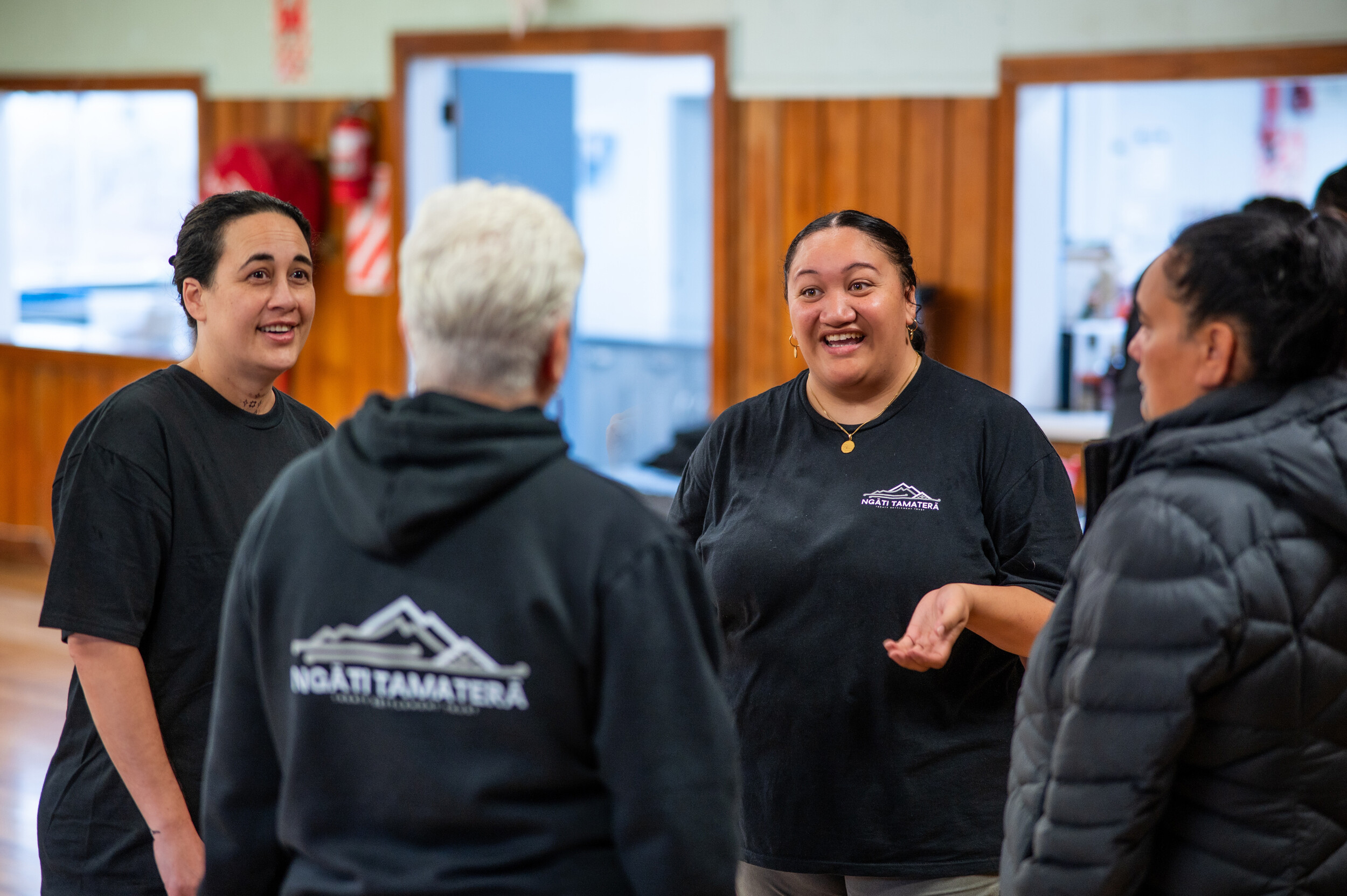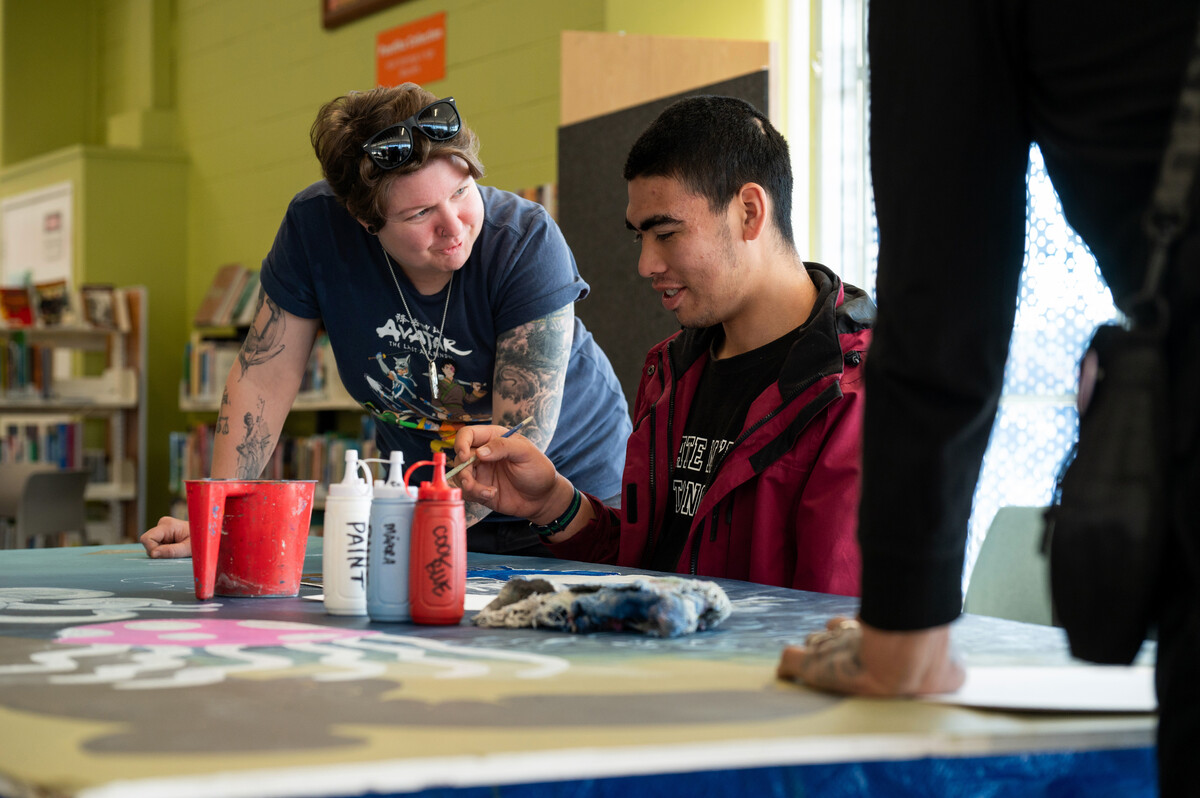
A deep connection to te taiao guides the actions, decisions, and vision of Ngāti Tamaterā; a connection rooted in whakapapa, wairua, and kaitiakitanga.
The Ngāti Tamaterā Taiao kaupapa, to foster a healthy and thriving environment, is a commitment to uphold and protect the mauri of the whenua, moana, and awa, ensure the sustainability of their resources, the integrity of their tikanga, and the well-being of future generations.
Listen to the story:

A project to restore and revitalise Tīkapa Moana | the Hauraki Gulf, and its connecting tributaries, Te Oranga o Te Taiao Te Oranga o Ngā Whānau supports this kaupapa, with Foundation North providing funding over three years for programme costs and delivery.
Water quality in Tīkapa Moana is under increasing pressure from decades of land use, urban development, and nutrient runoff. These impacts have led to the degradation of the Waihou and Piako rivers, awa which flow into Tīkapa Moana. The most recent threat to the marine ecosystem is the arrival of the invasive exotic Caulerpa seaweed.
“Tīkapa Moana is very important, not only to Ngāti Tamaterā, but to all the tribes of the Hauraki peoples, because not only is it a pātaka kai, a food store, but it's because we had two important waka that came through these areas. One was our waka, Tainui, and the other was Te Arawa. So in terms of the important rituals and traditional narratives that we have, this is very, very important for us as Ngāti Tamaterā and for the rest of the Hauraki peoples as well.”

A focus on long-term sustainability
Te Oranga o Te Taiao Te Oranga o Ngā Whānau, aims to rebuild the mauri of the waterways for future generations while educating the next generation of Ngāti Tamaterā on the value of rāhui and other mātauranga Māori methodologies within the wider context of understanding te ao Māori, te reo, and tikanga.
The long-term sustainability of this mahi is behind the wider goals of this project: to build a cohort of knowledge holders, develop a more collaborative approach to regenerative practices, and engage and educate the wider community about the collective benefits of sustainable water management.
"When I was growing up, what we saw was abundance. There were kūtai, there were pipi and tuangi everywhere. Nowadays a state of abundance is a dream. But we can definitely start moving in that same direction.”
The commitment to collaboration has brought Ngāti Tamaterā to work in partnership with four other iwi who share the kaupapa of the restoration and revitalisation of Tīkapa Moana. The Pou Rāhui project, run in association with Waikato University Faculty of Māori and Indigenous Studies, prioritises mātauranga Māori while integrating Western marine science to identify traditional and marine science methods and tools to assist in-water restoration methods.
“My dad's been diving all his life, and I've just been fascinated by getting into that world and seeing how it connects to my marine tohu up at the university, the biology and science behind how everything works. I bring my theory side and it connects to my mataraunga Māori side, which incorporates, like some of our pūrākau, stories of how everything runs.”
This mahi has created opportunities to give taiohi (young adults) a base in mātauranga Māori and the pūtaiao (practical skills) they will need to sustain restoration and revitalisation in the decades ahead. Ngāti Tamaterā taiohi who have taken on the role for their iwi as Kāhui Taiao, environmental guardians, are now pursuing a range of educational opportunities to support their kaitiaki role. These include Bachelor of Science (Marine), Diploma of Professional Scuba Instruction (Level 5), PADI Open Water Scuba Diver, and Day Skipper CBE Certificate. These enable them to participate in survey dives crucial for monitoring marine areas under rāhui. This deepens their understanding of the environment and strengthens their capacity to lead future restoration efforts.
The Kāhui Taiao are part of a wider group of Ngāti Tamaterā Rangatahi Kāhui, each bringing unique perspectives and skills that will strengthen the rangatahi collective voice, capacity and capability. These include Te Kāhui Ahurea (Cultural Knowledge Holders); Te Kāhui Pakihi (Economic Development); Te Kāhui Hauora (Wellbeing Champions); and Te Kāhui Mātauranga (Knowledge Holders). The appointment of kahui is part of a wider process of succession planning, enabling rangatahi and developing their leadership.
The restoration of Tīkapa Moana and promotion of the value of marine biodiversity provides a focus for Ngāti Tamaterā empowerment of future generations through education and cultural preservation. Innovative digital technology, environmental stewardship, and future-of-work wānanga are enabling rangatahi to use communication tools such as animation to reconnect with the environment and recognise their role as kaitiaki. Virtual reality goggles are used to take rangatahi ‘under water’ to learn the differences between unhealthy and healthy marine ecosystems and learn what they can do to help the moana and the regeneration of taonga species. These activities are part of a wider drive to advance Tamaterātanga in digital innovation while ensuring rangatahi are equipped with tools such as coding, augmented reality, and storytelling to thrive in a tech-driven future.
“It's really important that when we're doing strategic planning, looking at what our goals and aspirations and objectives for future and for future generations, we bring rangatahi to the table and see what their vision is for themselves. The beauty about working with rangatahi is we go back to our past and we bring it into the future. What we're finding is the importance of tūpuna knowledge, ancestral knowledge. That grounds them in their own culture and helps them be confident about being Māori, about being descendants of Ngāti Tamaterā and all the other iwi they whakapapa to."

From wānanga that bring rangatahi together to explore te ao Māori, including tikanga Māori, kaupapa Māori and te reo Māori, to tailored leadership programmes, Ngāti Tamaterā is ensuring the next generation are strong in their whānau and iwi connections, equipped to guide their iwi forward and secure the future wellbeing of the taiao and the whānau.
“We are taking our rangatahi on a journey, to learn who they are, where they come from, and that they are accepted. For me, it’s just trying to give them a space to be themselves, unapologetically Māori.”




